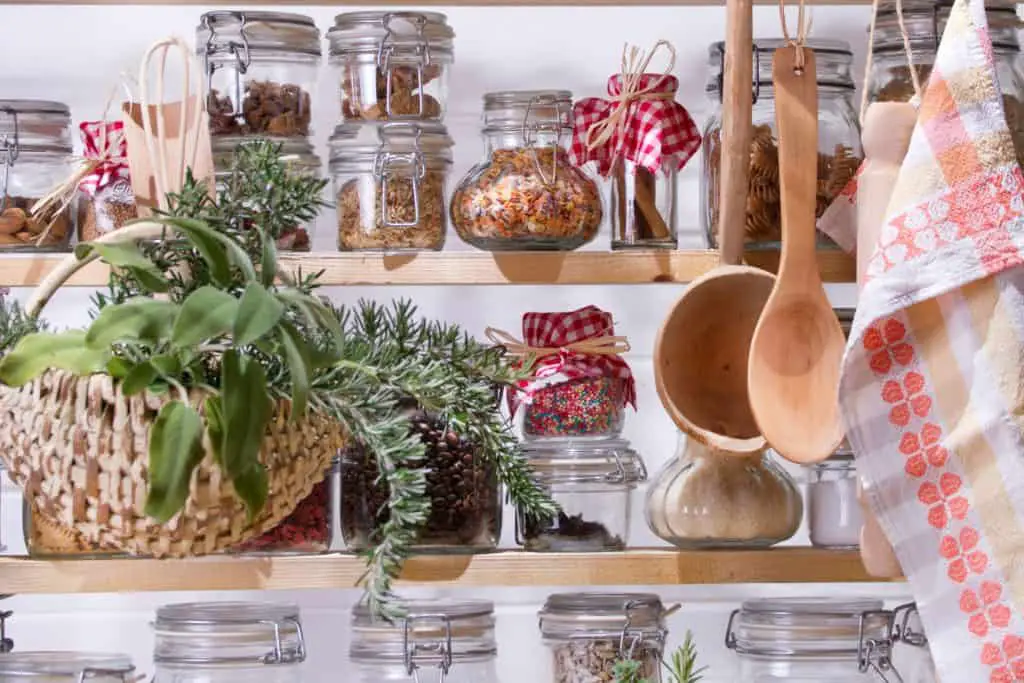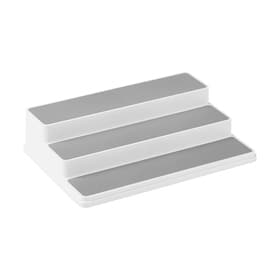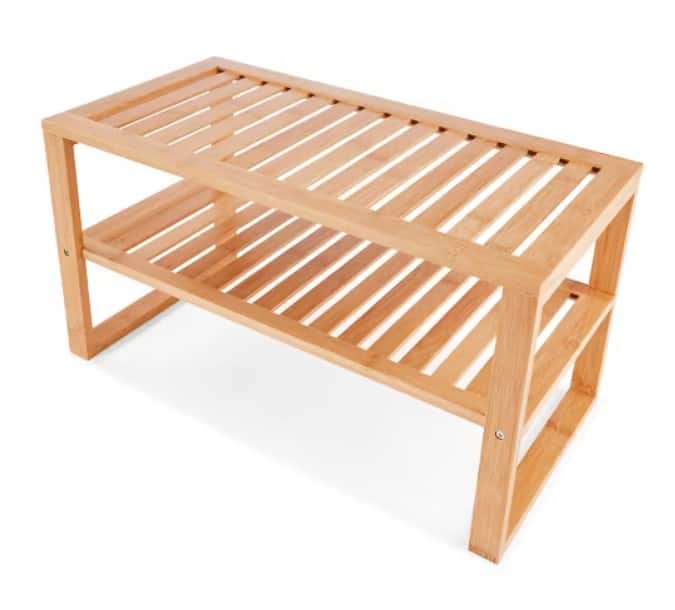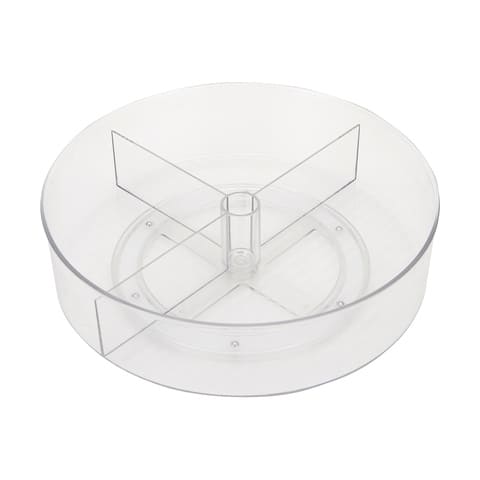How to keep your pantry organised
- and prevent food waste

It’s not uncommon to find expired items in a pantry. A spice mix you brought for a recipe long forgotten. Packets of snacks ignored because they fell out of favour. Long-life products gone way past their true shelf life. The pantry is the perfect place for these forgotten items. And it is, therefore, the perfect place to begin tackling food waste.
An organised pantry is key to preventing this kind of food waste and there are plenty of articles, videos and pantry porn out there, to provide the inspiration you need to produce a perfectly organised pantry.
But once it is organised, how to you keep it organised? And how do you do this in a way that prevents food waste?
The best way to keep your pantry organised and prevent food waste is to keep a minimal pantry with essential staples. Essential staples are generally spices, condiments, sauces, sugars and flours that you use on a regular/ semi-regular basis. All non-essential items belong on dedicated shelf space – let’s call it the “Use Up Soon” space – so the items are used up in the next couple of meals to be made. Along with adopting some effective storage principles, your pantry should stay organised, ensuring no item is forgotten or wasted.
In this blog post I break down this approach into 5 tips that will help you keep your pantry organised and prevent food wastage:
Tip 3: Store items correctly
Tip 4: Ensure you can see each item
Tip 5: Limit your backstock items
Why bother with this?
Keeping your pantry organised and reducing food waste has a number of flow-on benefits including:
* Saving you money on storage containers and storage solutions since you will be keeping a minimal pantry by following these tips
* Freeing up space in your cupboard – if limited space is an issue, this approach is for you
* Freeing up your time since you won’t need to reorganise your shelves over and over
* Saving you money on your weekly grocery bills because you will be using up items you have purchased before
* Saving you the time it takes to decide on what to make for dinner – part of your meals for the week are pre-determined by the Use Up Soon shelf.
So if this interests you, read more about my tips below.
(1) Ensure you have a "Use Up Soon" shelf
So this is my number one recommendation – to have shelf space dedicated to items that need to be used up.
This is not just for items that are going to expire soon. It is for anything that is not an essential item – items that you do not typically consume or typically need for cooking.
It might be something you brought on a whim and are unlikely to purchase again. Or something you brought for a particular recipe, where only part of the product was used up, leaving some behind.
Instead of decanting partially used products into a container, place them on the “Use Up Soon” shelf. Then next time you do meal planning, base your meals around using up these items.
I find this works really well to reduce food waste and it also helps keep your pantry clutter down to a minimum.
It may be counterintuitive because the “Use Up Soon” shelf can look cluttered at times since it contains random items, but I find it works. After looking at a number of different pantries, a common thing I see are packets here and packets there. And even if they are organised in some way, they aren’t being used up.
The same goes for super organised pantries where everything is decanted into containers. While items are organised, the food is not being consumed in a timely manner. And often the shelves are packed to the brim with containers that need to be reordered and reorganised constantly.
If you have an organised pantry and you are finding you are throwing food away, try minimising what you store away. Instead, put items partially used on the “Use Up Soon” shelf and make sure you use the items up when you meal plan next.
(2) Keep wet and dry ingredients to a minimum
So at the risk of repeating myself, keeping items to a minimum is key to keeping a pantry organised and preventing food waste.
So how do you know what to keep and what you should use up?
Over time you should have a sense of what your family likes to cook with and therefore, what wet and dry ingredients you need to keep on hand in the pantry.
For us, we cook a lot of Asian meals so we like to have bottles of soy sauce, oyster sauce etc. on hand. When I buy these items, I don’t put them in the Use Up Soon shelf – I actually hold onto these items, storing them away in another area of the pantry, knowing they will be used up before they spoil.
For our dry ingredients, I know we use flours and sugars often. So of course I don’t put these items on the Use Up Soon shelf. I decant flours and sugars into containers to store them away in another area of my pantry.
Likewise with spices, I store them away in spice jars and use the spices throughout the year. The only exception are spices I know I am not going to use again – these go in Use Up Soon shelf (and yes, I end up cooking with a spice that I don’t like so much for many meals until it is used up – afraid its the responsible thing to do!).
Some things I don’t keep on hand are pasta, grains, and packaged and canned goods. With these items, I only buy what I need. If there are leftovers, there usually isn’t a lot left over. Typically what is left over can be used up in one meal. So I use it up in the next meal – I see no need to decant these items into separate storage containers to be used at another time.
So be very selective about what wet and dry ingredients to keep on hand – only store away items that you know your family will need in future meals, and don’t store away items that you can use up easily in the next meal.
(3) Store items correctly
For those essential dry ingredients that you decide you need to have in your pantry, it is important to store them away correctly to prevent them from spoiling.
However, that does not mean you have to spend a lot of money on storage containers.
For many years I have reused glass jars as storage and they have worked out brilliantly.

Even for items I don’t use all that often – they store well and do not spoil. No pantry moths or weevils.
You just have to make sure you tighten the lids each time! Do that and you should have no issues with food being spoilt.
Some other tips with storage:
* Clear containers are best so you can see what you have at a glance
* Labelling is important even if you have clear containers. You don’t have to get fancy with labels (although you can if you want). I find a sharpie works just fine. If you ever want to change what you want in the containers, you can easily wipe off a sharpie “label” with soap and water – or my trick is to colour over the words with a sharpie and wipe it off immediately.
* Limit the number of containers you have. This will then ensure you limit the number of dry ingredients you keep in your pantry, forcing you to keep your pantry down to a minimum
(4) Ensure you can see each item
The reason why you need to ensure no item is hidden is not about food wastage – if your pantry is minimal and you are storing away the essential items only, forgotten and expired items should not be a problem.
Ensuring no item is hidden is more about making it easier for you to keep your pantry organised.
If you can see each item and where things need to go, it’s easier to keep things organised.
If you have one item in front of another, things invariable get mixed up. So that stock photo above of jars in various sizes in front of one another – not a great idea.
If you have got items down to the essential minimum, ensuring you can see each item should not be too challenging. However, if your storage space is awkward or limited, you may need the aid of some pantry storage solutions to maximise your space and ensure no item is hidden from view.
Here are some storage items that could help:
(1) Tiered shelves are great for smaller items like spice jars. You can see each item easily and things tend to stay organised since each item has a “home”.

Source: Kmart
(2) Pantry shelves inserts work well to raise items along the back of the pantry. Then you can place smaller items in front.
But you need to make sure you use the top shelf while leaving the space underneath empty. If you do end up putting something underneath, you are likely to forget about these items when you place something in front of it

Source: Kmart
(3) Lazy susans are great for taller items that can not go on shelves. So it works really well with condiments.
The beauty with lazy susans is that you can turn them easily to grab what you need, and you can easily put things back.
Personally, I have not used lazy susans / turntables in my own pantry. While they are handy, I do find they take up a bit of space. Instead, I have lined our condiments along the back wall of our pantry and the area in front is used for frequently used items and the Use Up Soon section. So the condiments aren’t too obscured from view.

Source: Kmart
(4) Under-shelf shortage baskets are another great option, especially for light packaged items like snacks. Instead of placing them in baskets where you can see what’s inside, try these open mesh storage baskets.

Source: Ikea
Personally, I keep a limited number of snacks stacked in front of each other in a small area in my pantry. They stack up pretty easy and I find there is no need for storage solutions if things are kept to a minimum.
So never feel that you need to buy the storage solutions mentioned above, in order to have an organised space – the suggestions above are for those struggling to ensure no items are hidden.
Of course have some flexibility with the “ensure you can see each item” rule. For example, large cans of oil kept as backstock don’t need to be in plain sight. Backstock in general can be hidden away, as long as you and others are aware of where to find these items.
(5) Limit your backstock items
Backstock is back-up of items you already have opened and in use.
This NEEDS to be kept to a minimum.
It may be tempting to buy backups of everything your family uses but it is better in the long run to resist these temptations. You don’t need to have your pantry fully stocked like supermarket shelves, as tempting as pantries like these look.
Many times you don’t need backstock if you meal plan before you go grocery shopping. Through meal planning, you ensure you have what you need during the week. Or at most you have to wait one week for an item and make do with a substitute.
But backstock does have its place. Backstock should be for items the family go through quickly that you don’t want to be caught without.
Even then, you only need one backup of these items. Once you use that backup, you put it on the shopping list for the next grocery run. There is no need to have multiples of the same thing.
So what kind of items are useful to keep as backstock?
That depends on what your family consumes regularly, that you can’t do without if it runs out. For us, it’s things like flour, sugar, salt, jam, long-life milk and a couple of items we use to make the kid’s lunches (we tend to make the same thing each day for the kids so we always have a backup of those items on hand). And coffee. Lots and lots of coffee.
And there is a place for “emergency” backstock. By emergencies, I mean situations like unexpected guests coming over or going out unexpectantly and needing snacks. Situations like that.
It makes sense to have something on hand that allows you to whip up a quick meal. For us, we keep on hand pasta and pasta sauces. I’m sure you could think of something better but that’s what we have.
We also have on hand a couple of packaged snacks “just in case”. It’s not a great habit but it certainly is convenient to have packaged snacks that are easy to grab when going out or if needed in between meals.
And so this food does not go to waste, each year get into the habit of using the emergency backstock and replacing it with new, long-life products.
In essence, to keep your pantry organised and eliminate food waste, keep your pantry stocked with essential items you know you will use up during the year while all other items are placed on a shelf to be used up – do not store these items away.
In future posts, I will go through common pantry items and how these principles are applied in my own pantry.
It’s a system that has worked for me for a long time now. Rarely, if ever, do I have expired items that I need to throw away. And years can pass without me having to lift a finger to organise my pantry. And yet it looks pretty much the same as always. It’s the best.
xxx Tahsin




